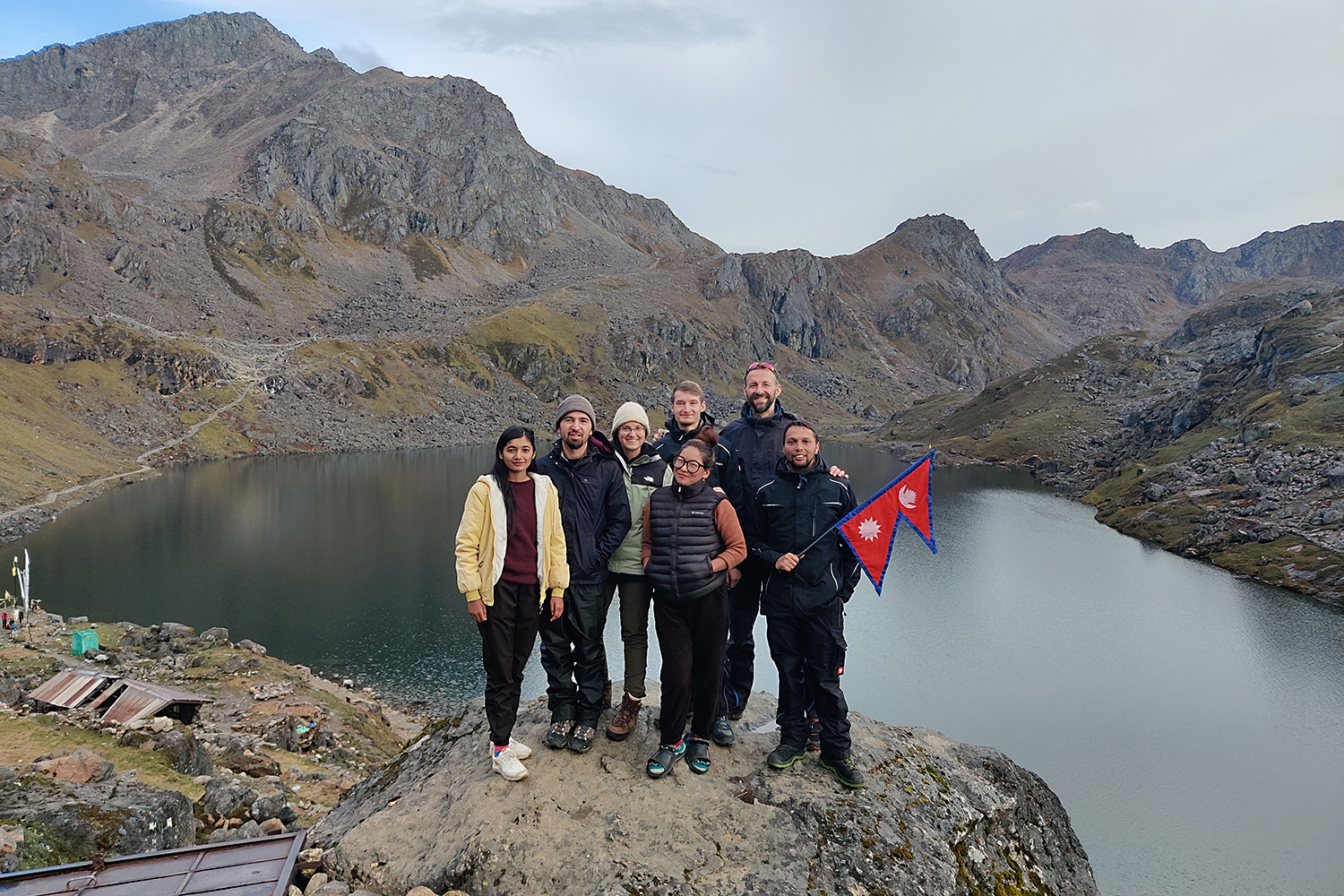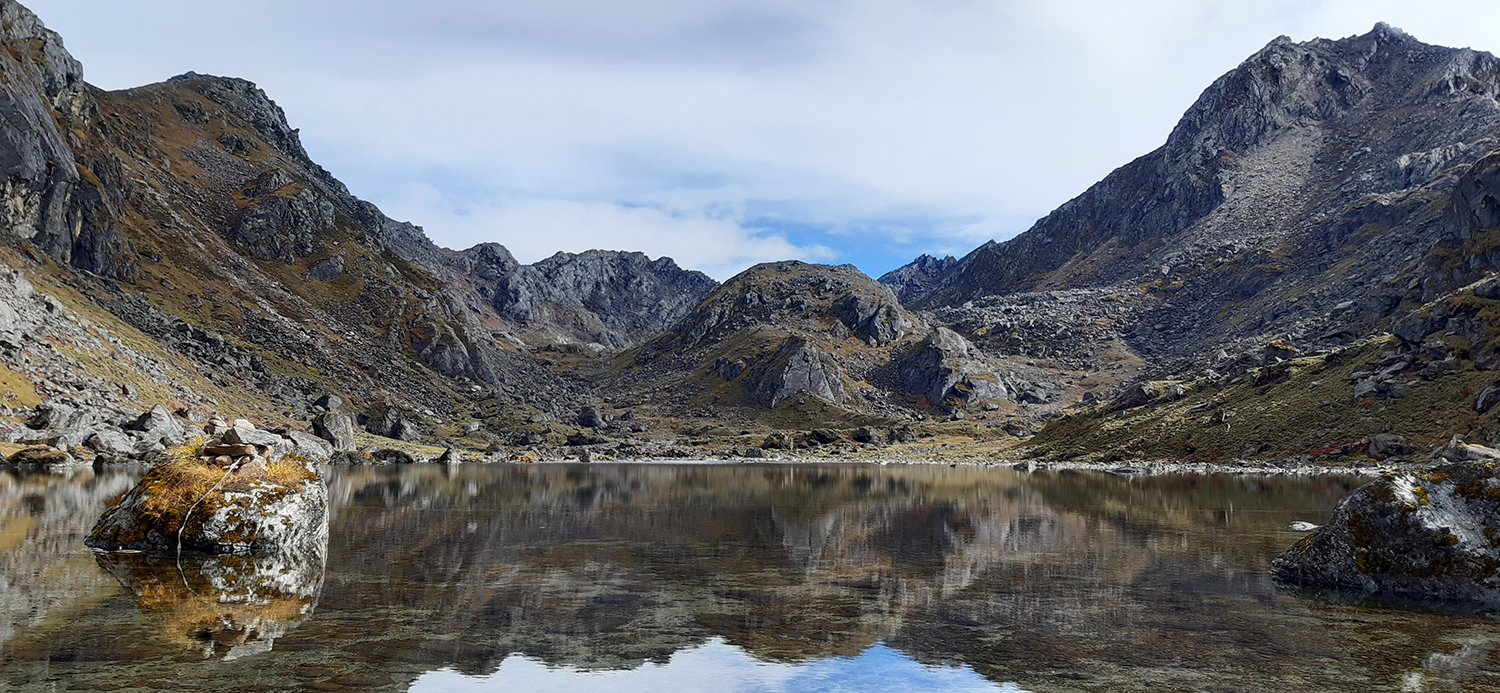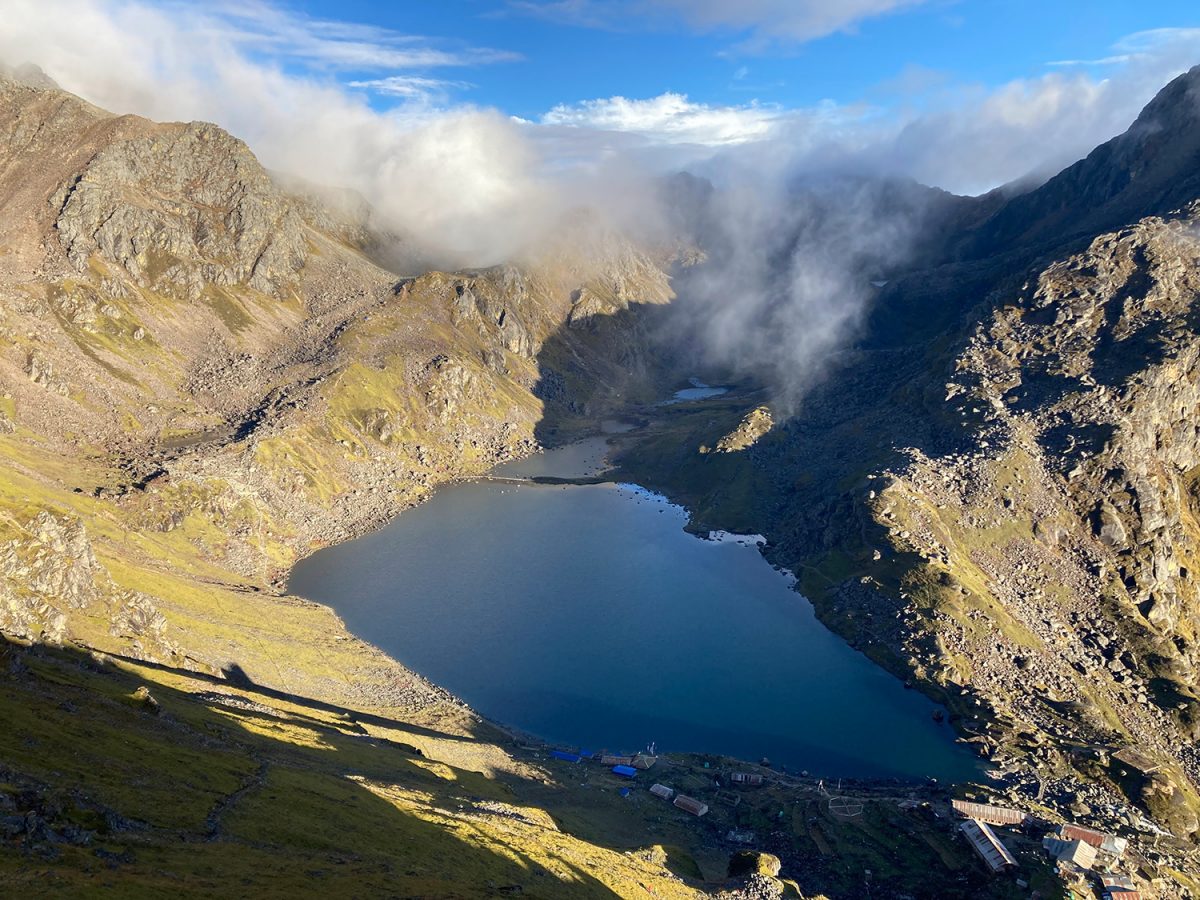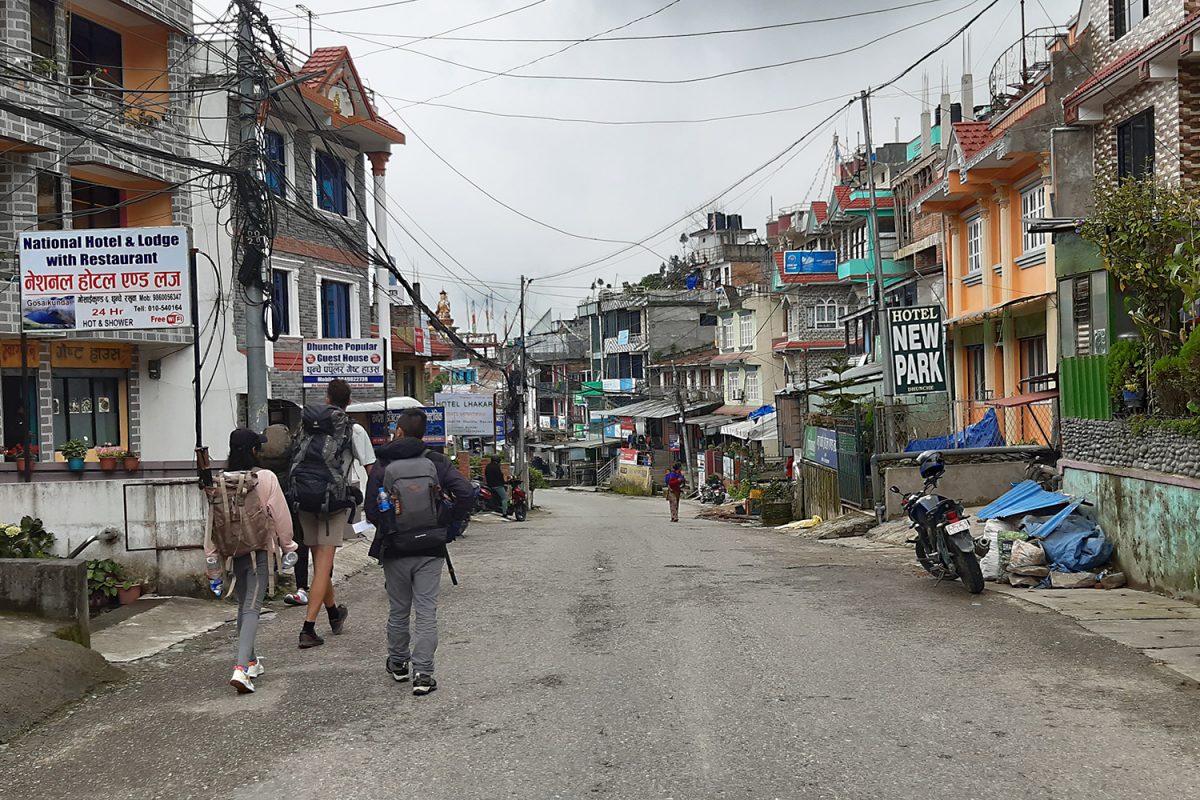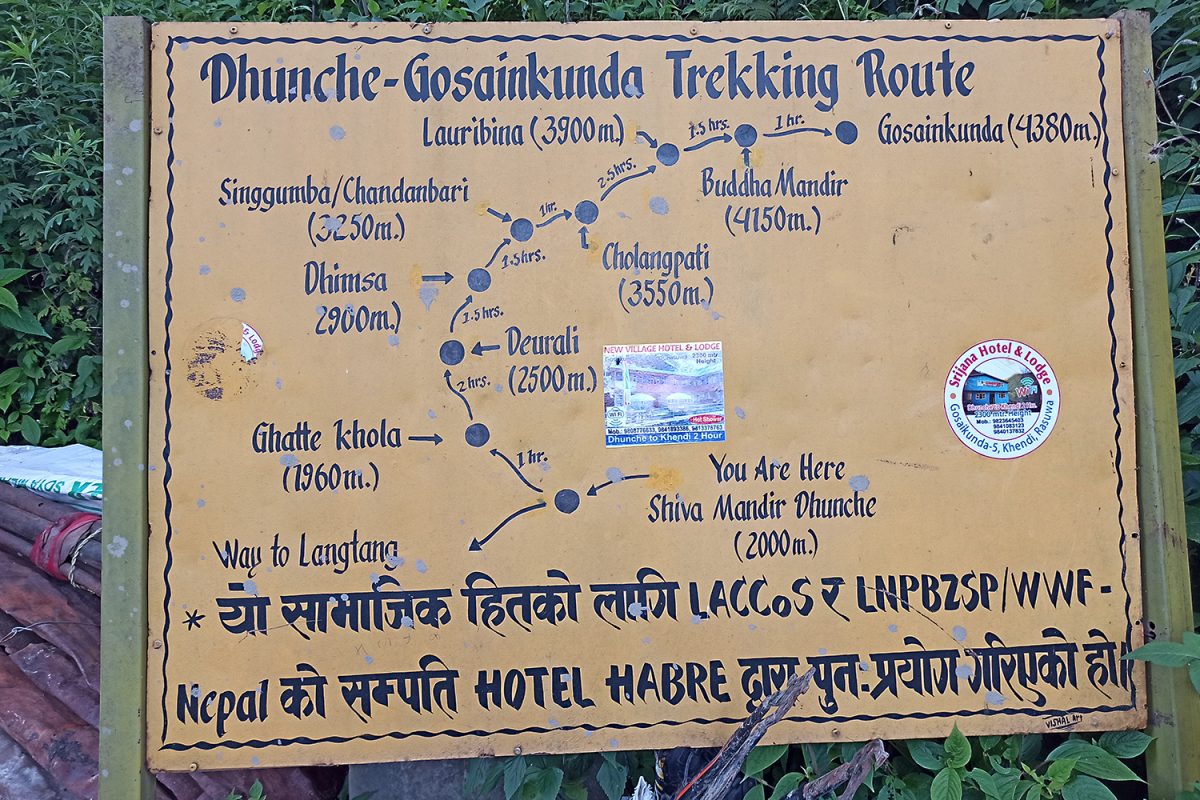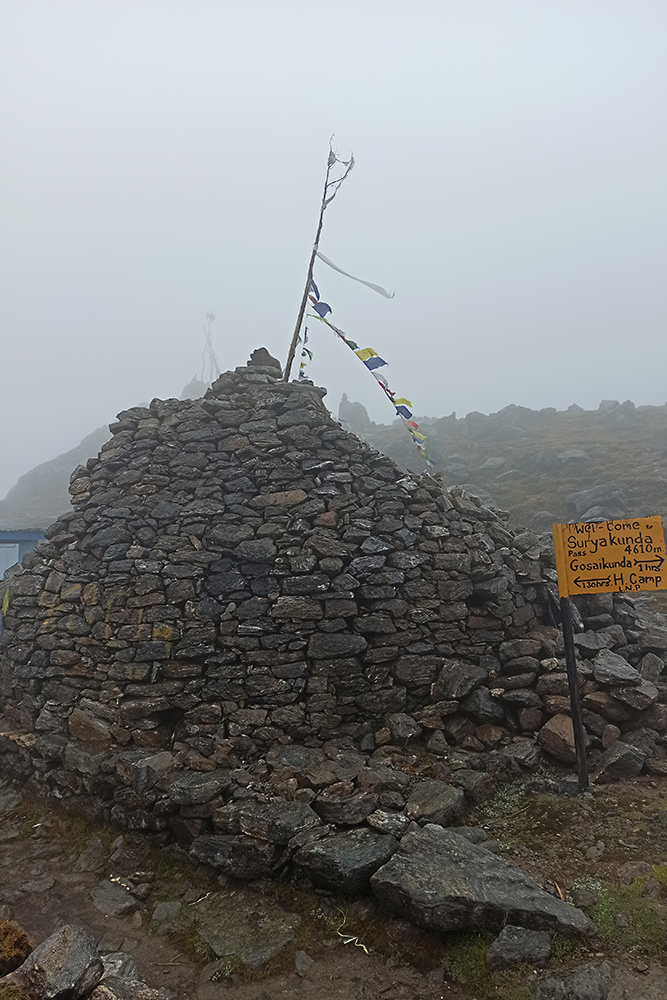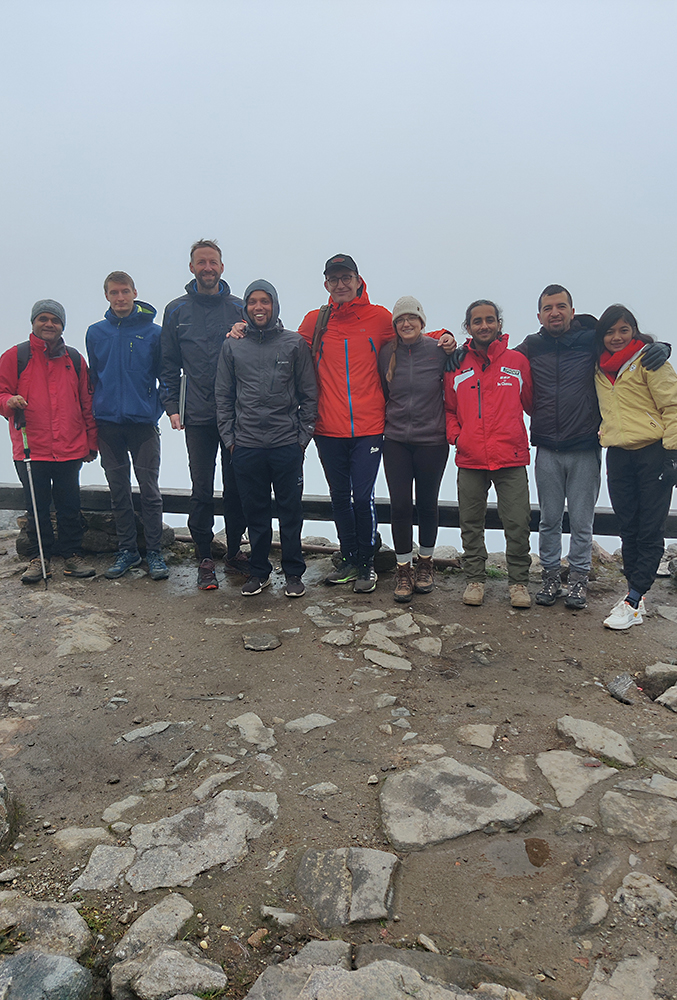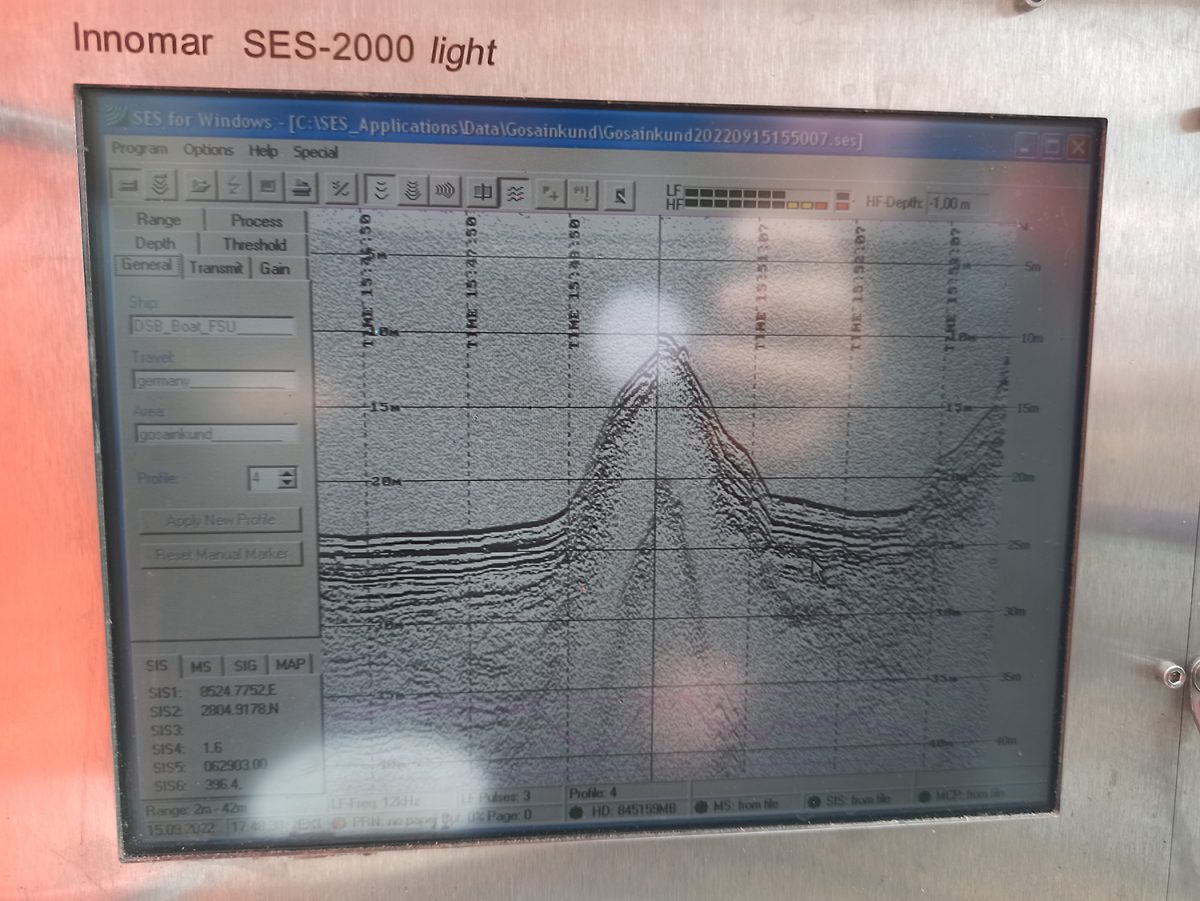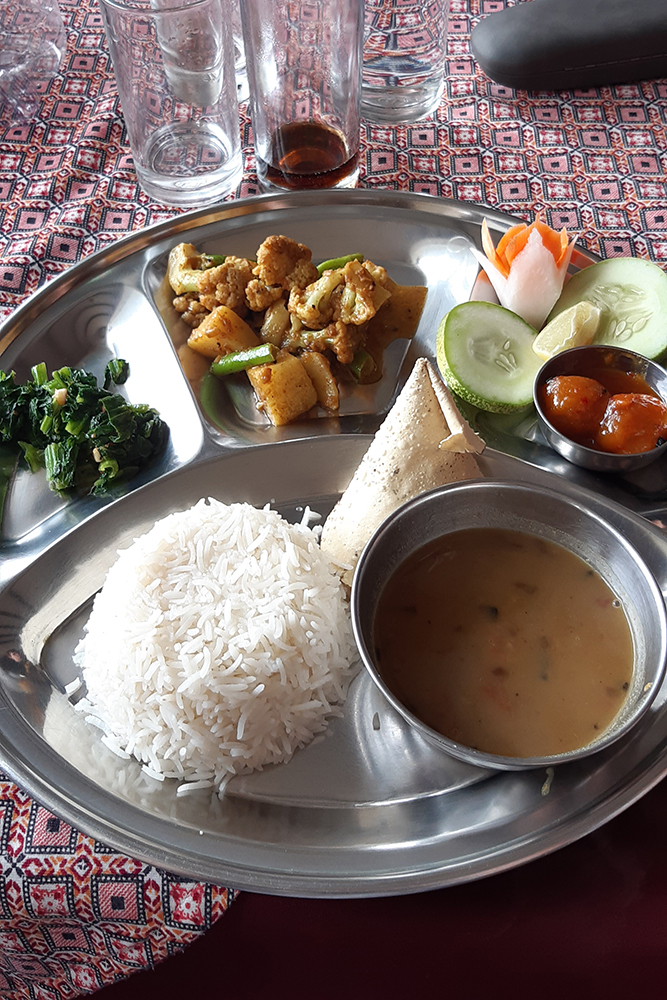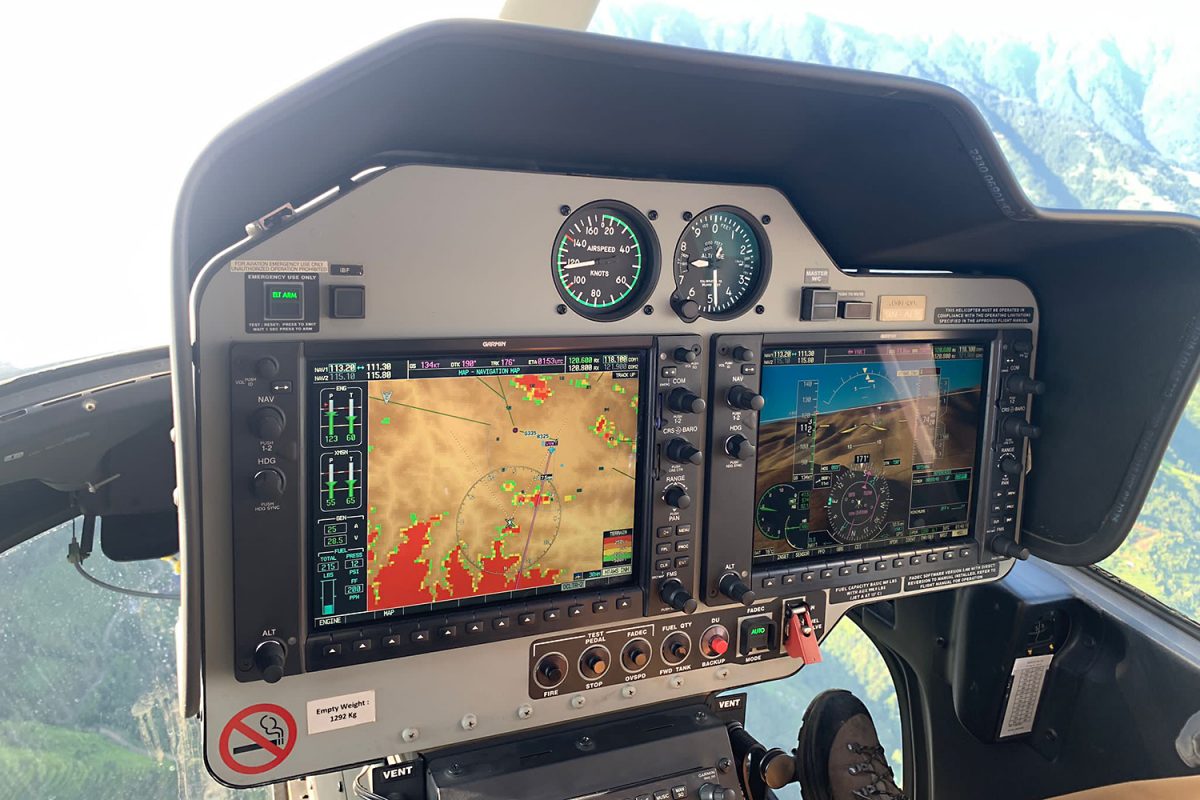Expedition Himalaya: Palaeoclimatology in the Nepalese high mountains A Nepalese-German research trip of biologists and geologists to lake Gosainkunda
How did the climate and biodiversity of the Nepalese lake Gosainkunda look like in the past and how can we use this information for the future? To investigate this, researchers of the international graduate school TransTiP together with researchers and students of the Tribhuvan University in Kathmandu recently sampled this high-altitude lake in the Langtang national park for their (palaeo-)climatological research. Dr. Katharina Dulias from the Institute of Geosystems and Bioindication reports from the 14-day long expedition:
“Together with three TransTiP PhD students and professor Roland Zech of the Institute of Geography at the Friedrich-Schiller-University Jena I participated in a 14-day expedition in the Himalaya during September 2022. We wanted to take water and lake sediment samples from lake Gosainkunda – located at ca. 4,500-meter altitude in the Langtang Nationalpark. We investigated the lake for its seismic profile, as well as for its water quality. Additionally, we took several lake sediment cores of up to 1.8 m length. These sediment cores will be analysed during the upcoming months in Jena and at the Institute of Geosystems and Bioindication. Planned are e.g., geochemical, genetic and biomarker analyses, as well as dating of the sediments.
The results help us to understand the climate and the biodiversity of the lake in the past. Using the current state, based on the water quality assessment, planktonic diversity and surface sediment samples, we can compare the recent state of the lake with past lake water conditions and thus, give a prognosis on the future development of lake Gosainkunda.
“Dal Bhat Power 24 Hour”
Aside from the fieldwork we also learned a lot about the Nepalese culture, thanks to our colleague professor Binod Dawadi of the Tribhuvan University in Kathmandu and his students. Already on our first day they introduced us to the Nepalese national dish dal bhat, which is based on lentils and rice. This simple every day dish gave us power throughout the entire expedition. No surprise they have a saying in Nepal “Dal Bhat Power 24 Hour”, which you can find in Kathmandu in many shops printed on T-Shirts.
We needed the power in the next days for our three-day trek through the national park to lake Gosainkunda. In total we made about 2,500 meters in altitude. The trek itself is only about 15 kilometres long. But in order to acclimatise to the altitude and to reduce the worst effects of the unavoidable high-altitude sickness, we included two overnight stops. Like this our bodies had more time to adapt to the reduced amount of oxygen at high altitudes.
Team spirit was rewarded
Unfortunately, the weather for most of the time was extremely rain, foggy and cold, which caused some logistical difficulties and delayed our anticipated work schedule. Our amazing team, however, managed this really well and kept a positive attitude throughout. This shows how important a good team spirit is, because in the field nothing ever works as planned. Improvisation and adaptability, as well as a positive attitude are key.

TransTiP PhD student Sudip Acharya and Maximilian Prochnow (FSU Jena) with a lake sediment core. Picture credits: TransTiP
Our team spirit paid off in the end. We defied the bad weather and all difficulties and were able to take all samples and measurements. And finally, the sun came out as well! On our last evening we could hike up the peak behind our hotel and observe the sunset from the mountain top and enjoy the absolutely stunning views of the surrounding mountain ranges. The absolute highlight was the flight back to Kathmandu with the helicopter! We all won’t forget the views on the highest peaks on Earth any time soon.”

